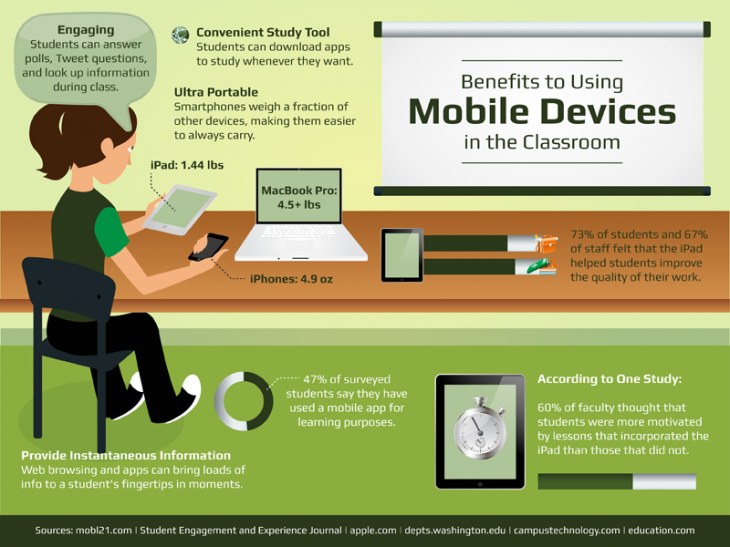
BYOD isn’t just for the workplace, there are more mobile devices in the classroom than ever before. In the past, teachers and education administration looked at mobile devices as a nuisance. Now, they’re now harnessing them as one of the most powerful educational tools. Here are three pieces that cover why, how and who is capitalizing on mobile for education.
1. Mobile Learning Technologies for 21st Century Classrooms by Scholastic
In Mobile Learning for Technologies for the 21st Century, Jonathan Wylie explains why mobile is so invasive in today’s classroom. “Mobile learning technologies offer teachers-and students-a more flexible approach to learning. Computer labs are great, but do your students use technology in the classroom, in the school garden, in the study hall, in the gym, and on field trips? With mobile learning devices, you can do all this, and more.”
Still not convinced? The article also notes that in July of this year, Amazon announced that in the last quarter it had sold more Kindle e-books than it had hardcover books. “Amazon sold 143 Kindle books for every 100 hardcover books, and this number is still rising. In the last month, it was as high as 180 Kindle editions for every 100 hardcover books. Can you imagine a world where students can carry around all their textbooks in one easy-to-read, lightweight device? I can.”
And, let’s face reality. Students are already using cell phones at school, so why not use them for education.
2. Using Smartphones in the Classroom by the National Education Association
This piece points out just how many devices children have. According to data compiled by the research firm Nielsen, 58 percent of American children from 13- to 17-years-old owned a smartphone as of July 2012—an increase of more than 60 percent over the previous year. And with over 50 percent of mobile phone users in America now using smartphones, the numbers only seems to be growing.
Edward Graham elaborates on why mobile makes sense in the classroom, “with their easy internet access, a multitude of education-friendly apps, and the ability to be used at a moment’s notice (after all, what smartphone-owning teenager would go anywhere without their phone?), smartphones have all the tools necessary to boost student learning.
3. 2015’s Top Education Technonlogy Trends by Edudemic
So, what does mobile in the classroom actually look like? In “10 Ways to Use Mobile Devices in the Classroom,” Katie Lepi discusses using mobile phones for a multitude of things, such as a research tool, to share photos of field trips or to create chat rooms for classes.
What’s your opinion on mobile in the classroom? One fact is that it’s going to take a lot more bandwidth to support the change. But, then again, that’s what we’re here for.
Want to chat more about technology in education? We’re always up for a good conversation on Twitter, Facebook or LinkedIn.
Share this article!

